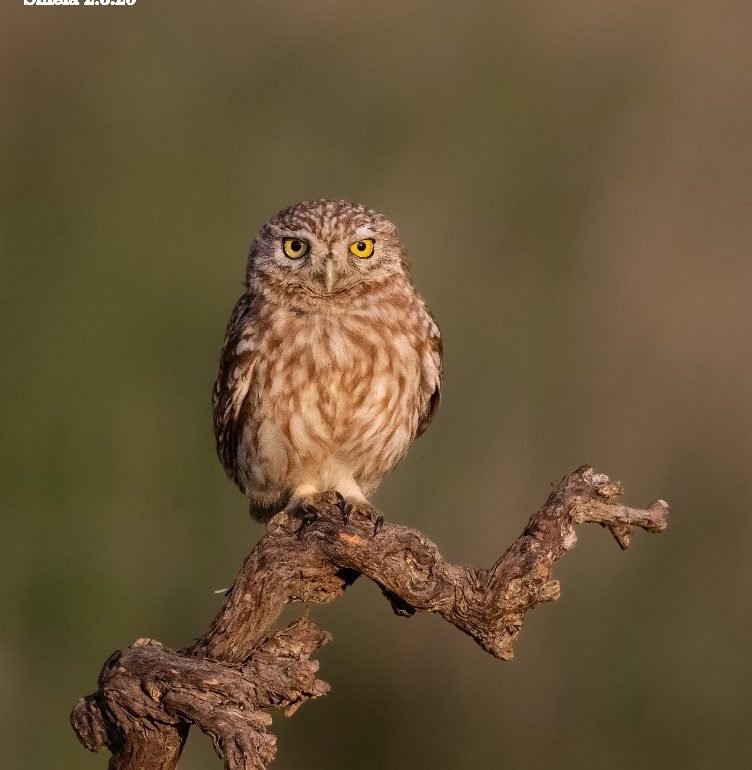
By Itamar Procaccia, The Weizmann Institute of Science, Rehovot 7610001, Israel
Itamar Procaccia is a professor at the Weizmann Institute in Rehovot, Israel, specializing in the Physics of Complex Systems. During his career he worked on and contributed to the study of chaos in physical systems, the turbulence of fluids, the physics of disorder, and the creation of fractal geometries in nature. Besides physics, he is an avid art collector and enjoys bird photography as a serious hobby.
The Little Owl, Athene noctua, was identified by the ancient Greeks with Athena, the virgin goddess of wisdom and war. As Athena was the patron Goddess of the city of Athens, the Little Owl was struck on the reverse of Athenian silver coins for centuries, see Fig.1. In Greek myth, the Little Owl is said to be kept on the shoulder of Athena and reveal truths of the world to her, and thus also represents the literal wisdom and knowledge of Athena in her role as a goddess of wisdom (see here for more about owls and wisdom).

Fig.1: AR Tetradrachm of Athens, Ca. 454-404 BC. Obverse: Helmeted head of Athena . Reverse: Little Owl standing right, head facing; olive sprig behind. The author’s collection.
In time, at least in the Middle East, the reputation of the Little Owl changed for the worst. Since it has the habit (when excited) to bow repeatedly, many Moslems believed that it mimics their prayers in disrespect for their Prophet. This caused the Little Owl and other night raptors to be feared and persecuted as night devils.
Presently, Little Owls are distributed widely, they inhabit much of the temperate and warmer parts of Europe, the Palearctic east to Korea, and North Africa. It was introduced into Britain at the end of the 19th century and into the South Island of New Zealand in the early 20th century. Accordingly, the International Union for Conservation of Nature has assessed its conservation status as “least concern”.
In Israel, the Little Owl is relatively common, preferring drier habitats at the border of arable land, sometimes nesting in deserted ruins, quarries that are no longer used, and rocky outcrops. For the bird photographer, it helps that Little Owls are territorial and monogamous, living in pairs until one of them dies. Therefore, one can rely on them being roughly in the same spot year after year, allowing careful study of their habits and preparing for quality photographs. Although they are night raptors, they are nevertheless active in the later afternoon, and one can take closeup photos at different lights, including the golden hour before sunset, see Figs. 2 and 3.
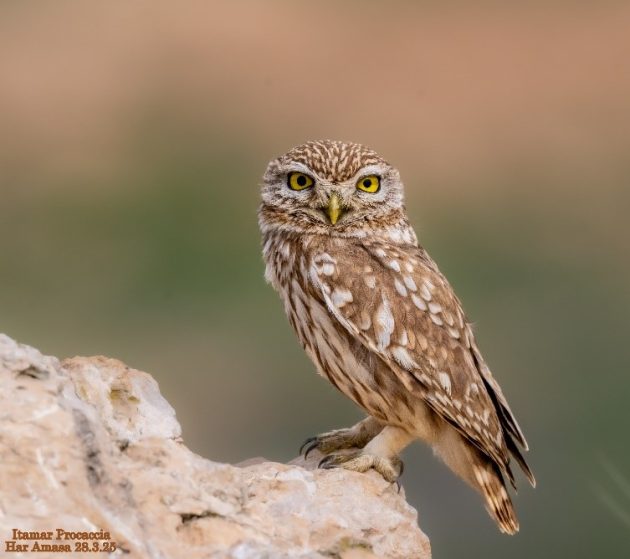
Fig.2: Little Owl in broad daylight.
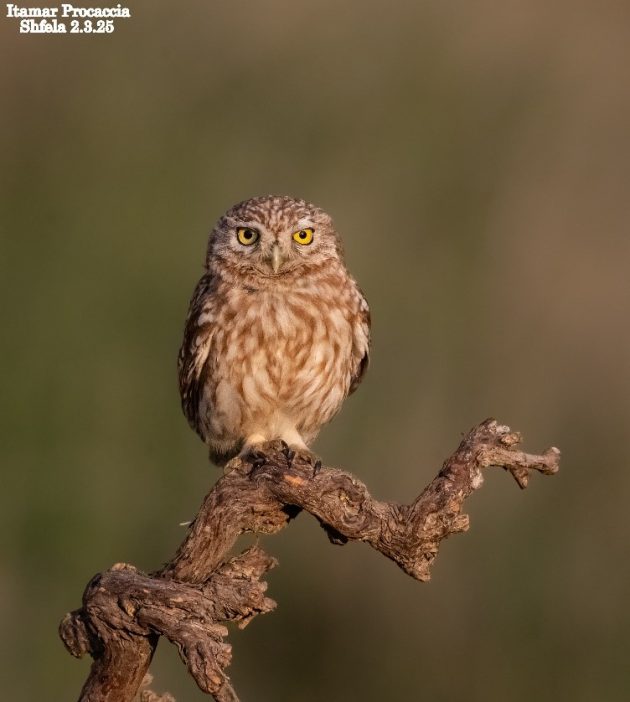
Fig. 3: Little Owl twenty minutes before sunset.
Little Owls feed on beetles and grasshoppers during the summer, as well as on reptiles and frogs. In winter, they also feed on small rodents and songbirds. In more dry areas, scorpions are important in their diet. Hunting is usually done by dropping from a high position, very swiftly and quietly, see Fig. 4.
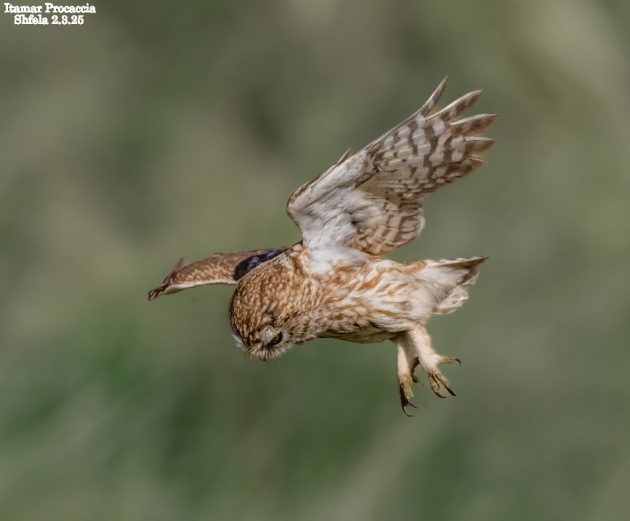
Fig. 4: Little Owl dropping from a high position on unlucky prey that is spotted on the ground.
They nest in nooks and holes in rocky walls, in holes dug by bee-eaters and rollers, in walls and roofs, and sometimes in holes in tree trunks. Before mating, the pair can spend time caressing and kissing, offering some very endearing photographs, see Fig. 5. To the human eyes, these scenes appear as a genuine expression of love.
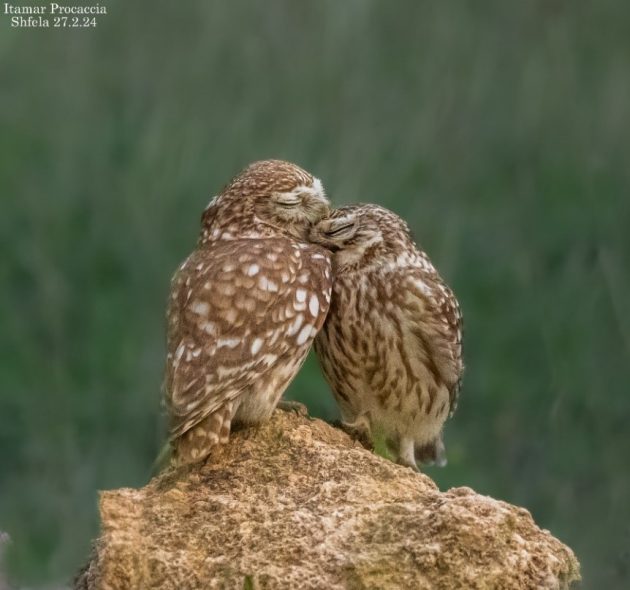
Fig. 5: Typical interaction between a pair of Little Owls before mating.
After mating, the female lays 3-6 eggs, and the incubation takes 27-28 days. The male is responsible for feeding the female during incubation, but both parents feed the chicks for about 30 days. The fledglings keep relying on the parents for another month after leaving the nest.
A bird photographer who wishes to shoot action images should know that Little Owls are very fond of worms and grubs, including mealworms. Preparing a perch with some worms on it guarantees a swift response, allowing photos like Fig. 6 and Fig. 7. One can predict where the owl will land, and using a manual focus on the predicted spot, one achieves nice results.
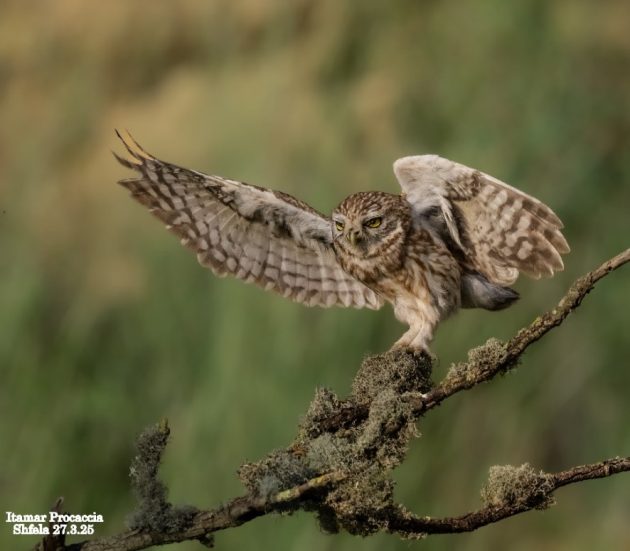
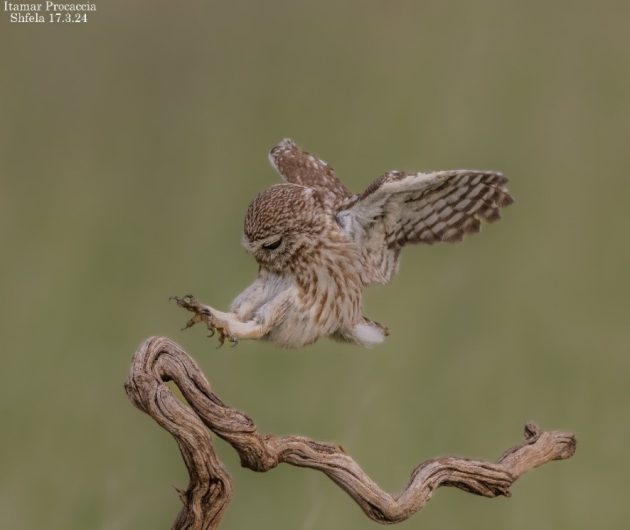
Fig. 6,7: Little Owl landing on a perch prepared by the photographer.

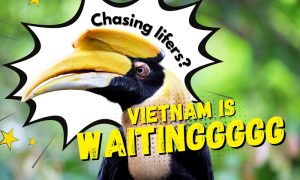
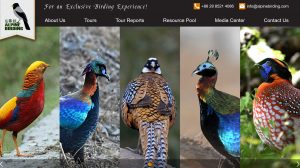
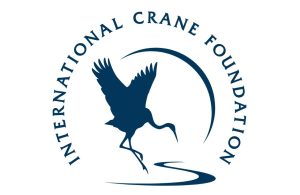
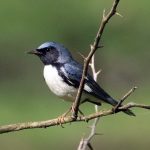
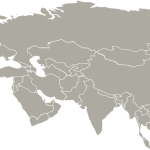
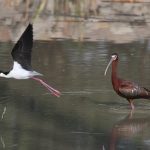
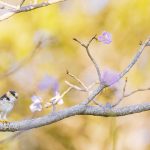
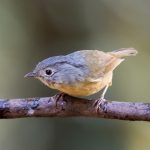

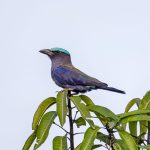
Super photos and fascinating facts! Definitely one of my favourites.
Agree 100% with Brian Meredith’s comment. I have seen Little Owls in Hungary and Bulgaria where I think they are also pretty common. Whenever we drove through villages we would scan the chimneys and rooftops for perched Little Owls. Always great excitement when one was seen.
A fascinating article that enriches with knowledge and rare photographs of beauties! Thanks for sharing.
Fascinating! Coincidentally I ordered seven owl-pellets on the Internet this morning for my grandchildren to explore,
dissect and discover the bone of their prey. As always, extraordinary photographs.